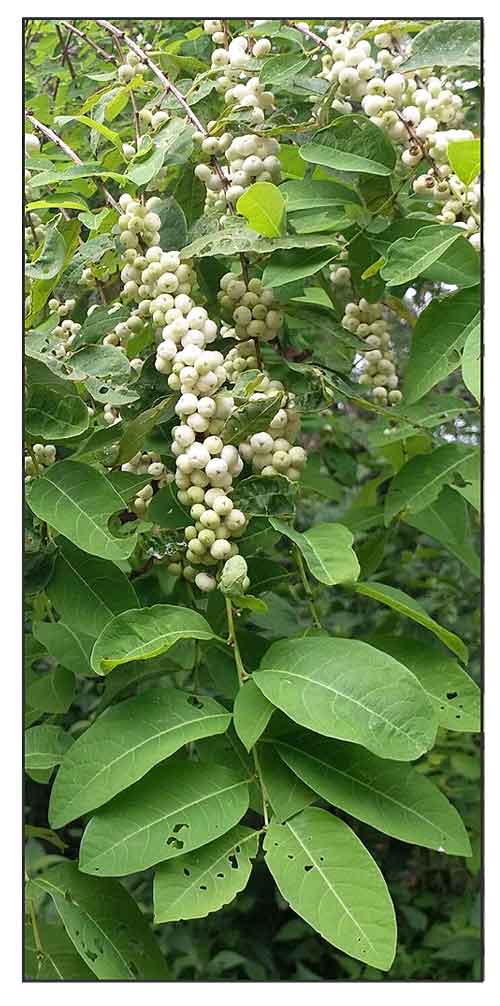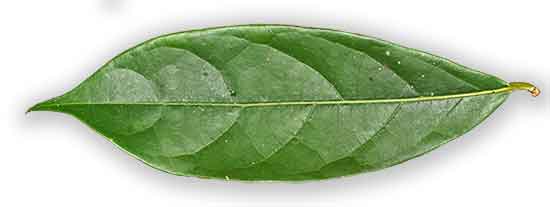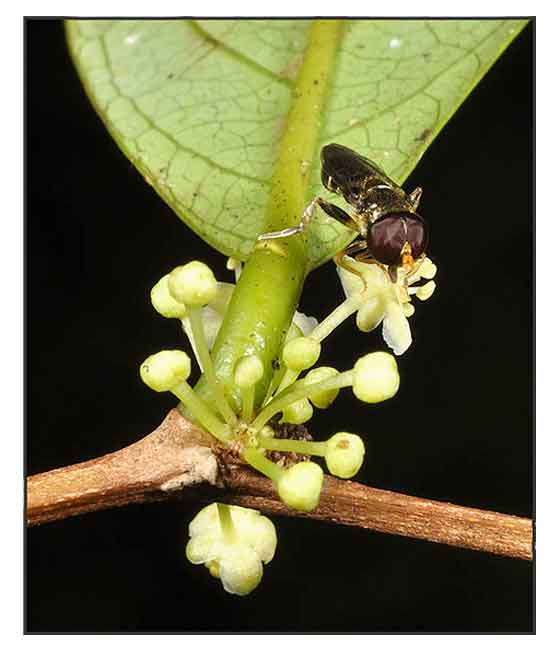
Family • Phyllanthaceae
Anislag
Malagau
Flueggea flexuosa Müll.-Arg.
WHITE BERRY BUSH
| Scientific names | Common names |
| Acidoton flexuosus (Müll.Arg.) Kuntze | Anislag (Tag.) |
| Flueggea flexuosa Müll.Arg | Anislang (Bikol) |
| Phyllanthus acuminatissimus C.B.Rob. | Anislog (C., S., L. Bisaya) |
| Securinega acuminatissima (C.B.Rob.) C.B.Rob. | Hamislag (Bik.) |
| Securinega flexuosa (Müll.Arg.) Müll.Arg. | Katamangan (Manobo) |
| Securinega samoana Croizat | Malagau (Buutuan) |
| Tras (Magindanao) | |
| White berry bush (Engl.) | |
| White berry bush is a common name also applied to Botolan (Flueggea virosa). | |
| Flueggea flexuosa is an accepted species. KEW: Plants of the World Online | |
| Other vernacular names |
| FIJI: Pou, Natoro, Baumuri. |
| FUTUNA: Poutea. |
| SAMOA: Poumuli.. |
| SOLOMON ISLANDS: Mamafua. |
| TONGA: Pomuli. |
| VANUATU: Namamau. |
Botany Distribution Constituents
Availability |
April 2024
![]()
 |
| PHOTOS / ILLUSTRATIONS |
| IMAGE SOURCE: Flueggea flexuosa / © Tim Woodward Hurst / CC BY-NC-4.0 / Non-commercial use / Image modified / Click on image or link to go to source page / EOL |
| OTHER IMAGE SOURCE: Phyllantaceae : Flueggea flexuosa / Leaf / Copyright © 2018 by P B Pelser & J F Barcelona (contact: pieter.pelser@canterbury.ac.nz) [ref. DOL131909] / Non-Commercial Use / Image modified / Click on image or link to go to source page / Phytoimages.siu.edu |
| IMAGE SOURCE: Phyllantaceae : Flueggea flexuosa / Inflorescence / Copyright © 2018 by P B Pelser & J F Barcelona (contact: pieter.pelser@canterbury.ac.nz) [ref. DOL131921] / Non-Commercial Use / Image modified / Click on image or link to go to source page / Phytoimages.siu.edu |
Additional
Sources and Suggested Readings |
• |
DOI: It is not uncommon for links on studies/sources to change. Copying and pasting the information on the search window or using the DOI (if available) will often redirect to the new link page. (Citing and Using a (DOI) Digital Object Identifier) |
| List of Understudied Philippine Medicinal Plants |
| New plant names needed The compilation now numbers over 1,300 medicinal plants. While I believe there are hundreds more that can be added to the collection, they are becoming more difficult to find. If you have a plant to suggest for inclusion, native or introduced, please email the info: scientific name (most helpful), local plant name (if known), any known folkloric medicinal use, and, if possible, a photo. Your help will be greatly appreciated. |
• |
 |




